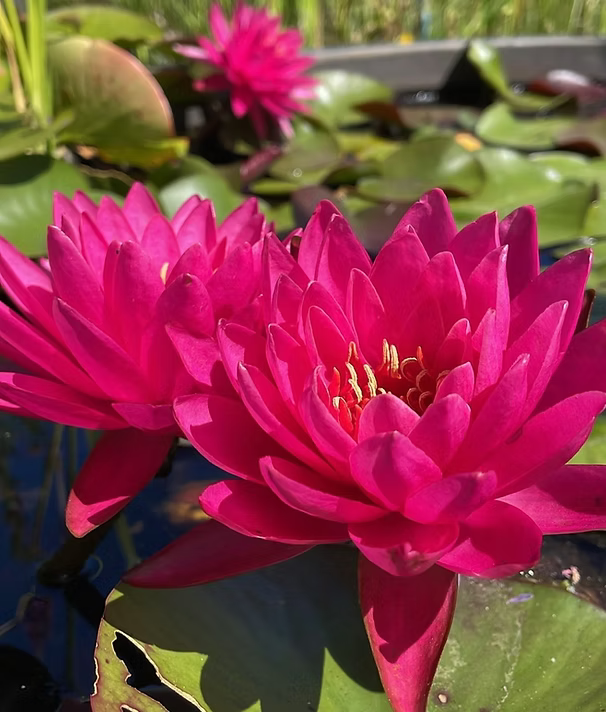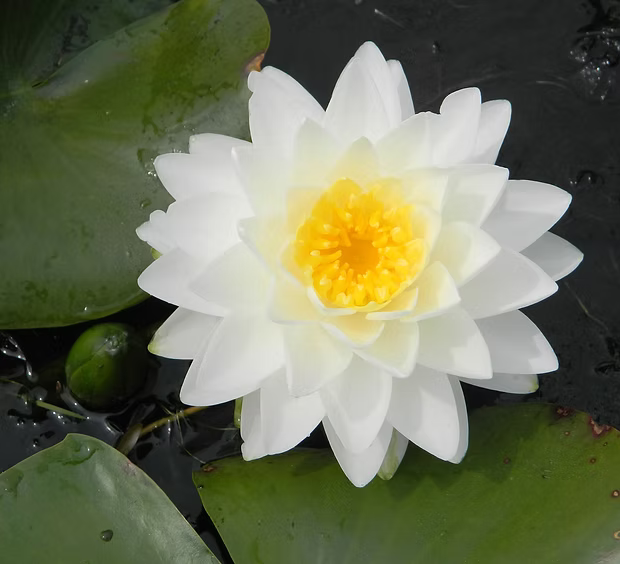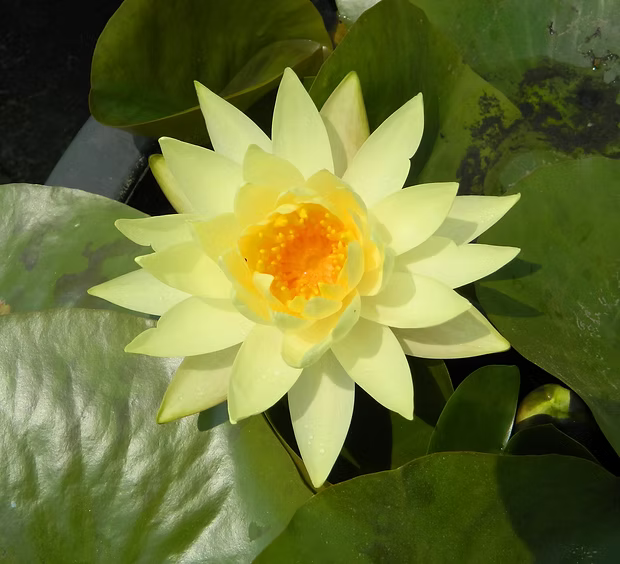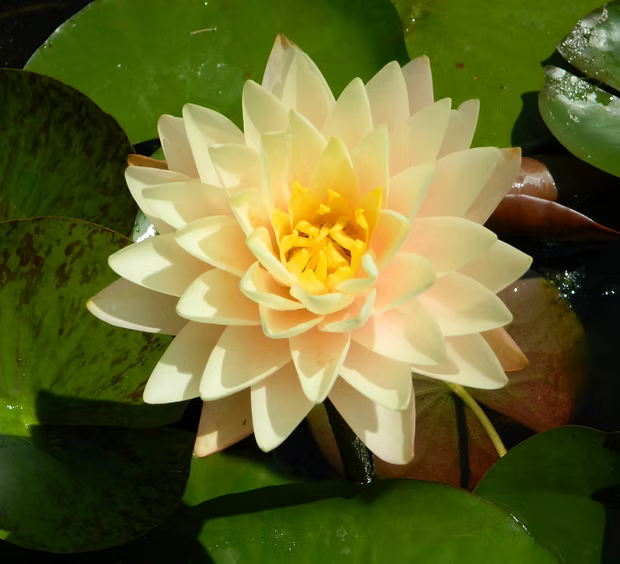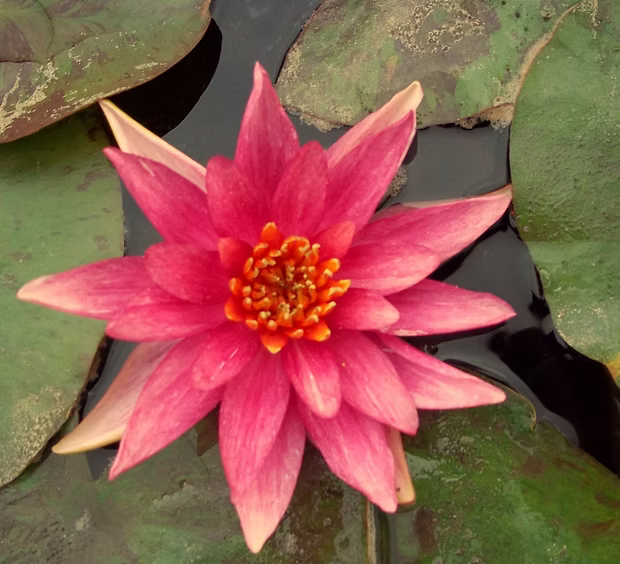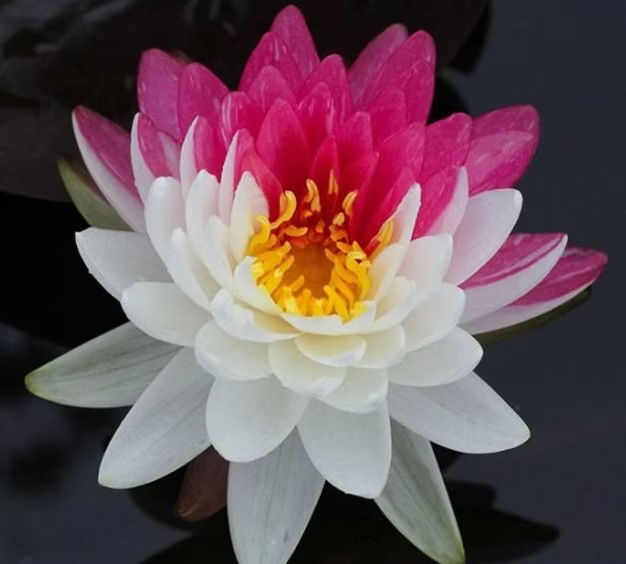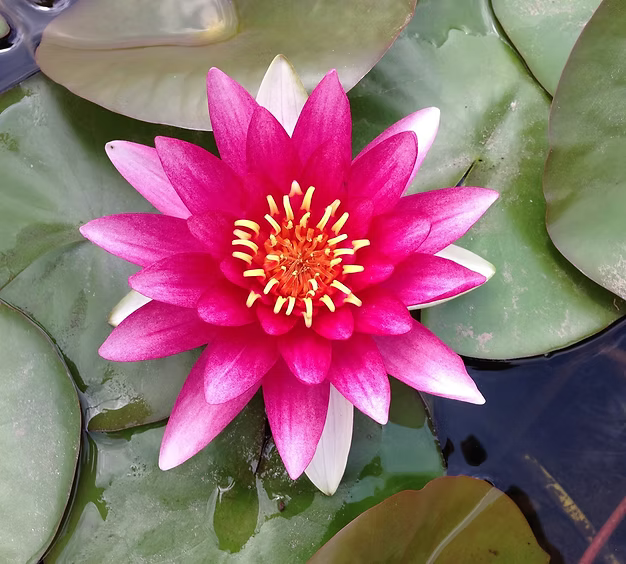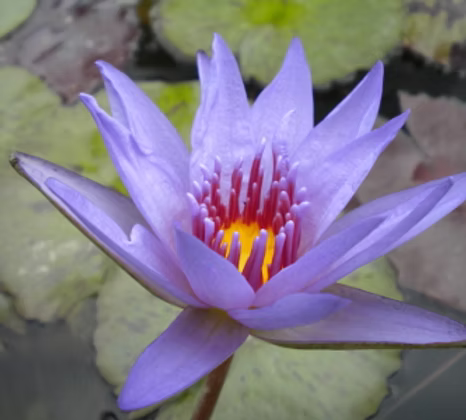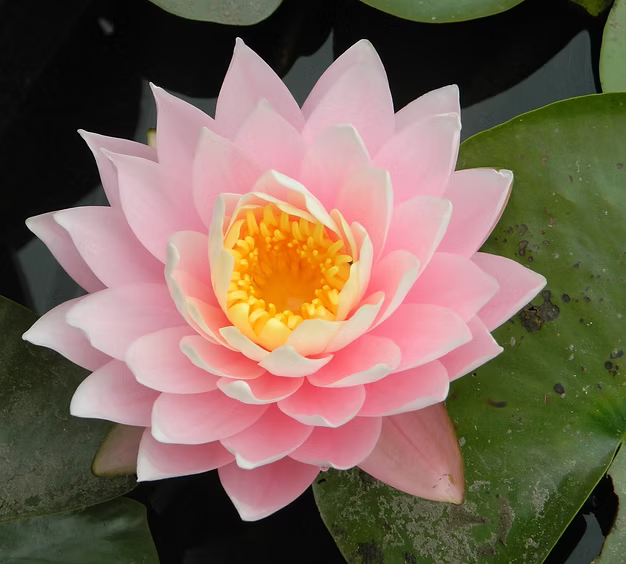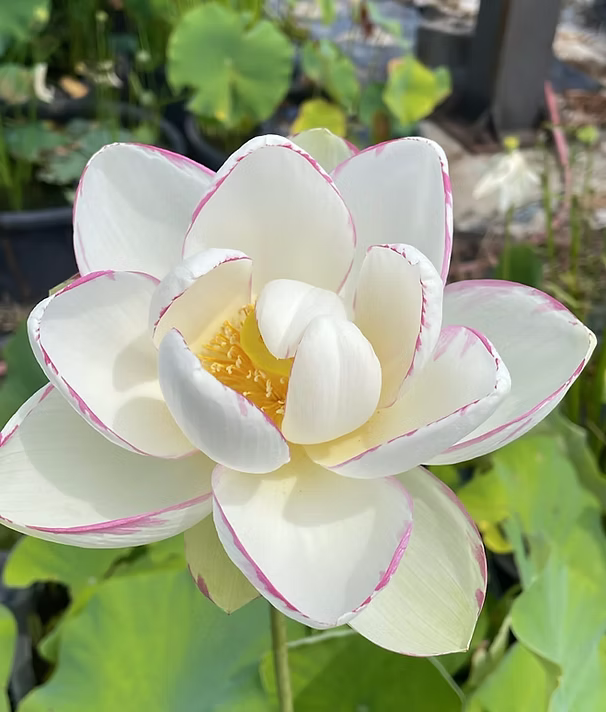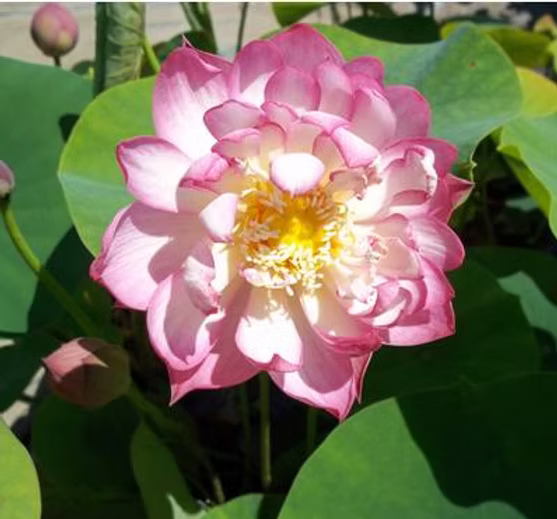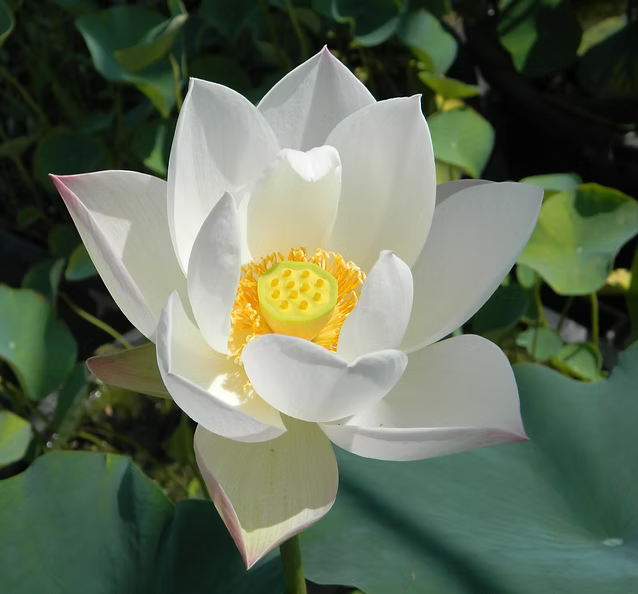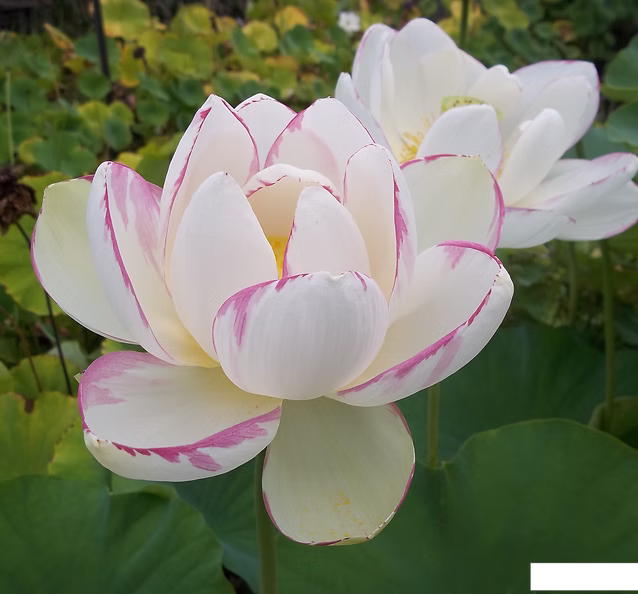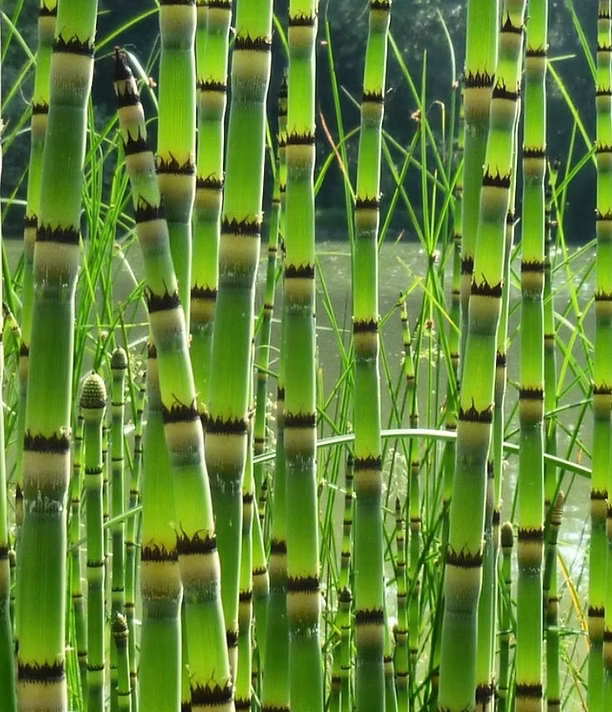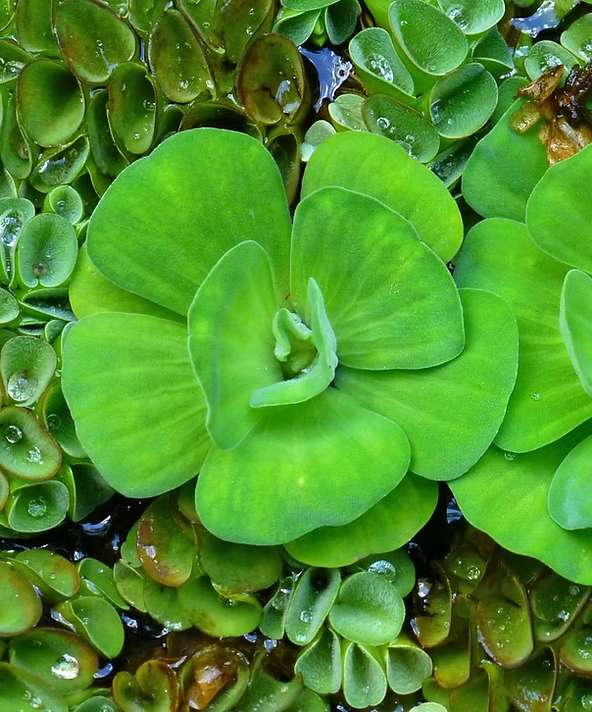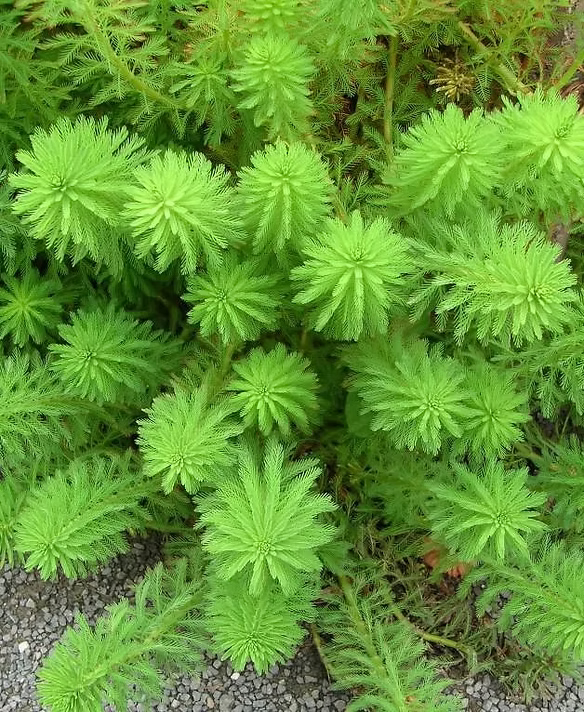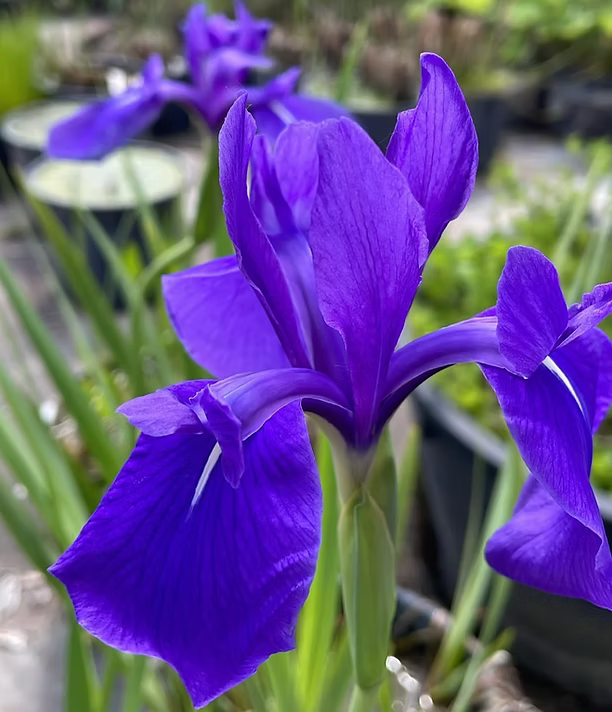Under 50€ for sale
250 products
250 products
Sort by:
Trapa natans verbanensis (Water chestnut)
Trapa natans verbanensis, commonly known as water chestnut, is an aquatic plant characterized by diamond-shaped, serrated leaves that are arranged in a rosette. The leaves are olive green and tend to turn red in the fall, adding a seasonal touch to the aquatic landscape. The stems of the plant are reddish and support small white flowers.
Reproductive Cycle:
- The plant bears fruit in October. After pollination, the fruit undergoes a particular process: it folds under water, detaches from the plant and settles on the bottom of the body of water.
- There, the fruit will ripen and give rise to a new plant that will appear the following spring.
- Once the pulp is used up, the empty shell of the fruit rises to the surface again, completing the life cycle.
Plant Information:
- Exposure: Full sun
Trapa natans verbanensis is ideal for ponds and lakes exposed to the sun, where its singular reproductive cycle and the ornamental aspect of its color changes offer considerable botanical and aesthetic interest.
Eriophorum angustifolium
Eriophorum angustifolium is a perennial herbaceous plant characterized by linear and grooved leaves. It blooms in late spring, during which it produces delicate flowers. After flowering, the plant develops elegant white tassels with silvery reflections, formed by thin bristles that can reach a length of up to 3 cm. These distinctive tassels give the plant an ethereal and decorative appearance.
Plant Information:
- Exposure: Full sun or partial shade
- Flowering: March - May
- Height in moist soil: 30–60 cm
This plant does well in moist soils and sunny to partially shaded areas, making it ideal for water gardens, moist borders or marshy areas.
Nucifera (syn. Speciosum)
Native to Asia and Australia, Nucifera, also known as Speciosum, is a plant revered in India as a symbol of purity and spiritual growth. Due to its very rapid growth, it quickly becomes a fascinating element in the garden.
The flowers open with a uniform vivid pink color on the first day and, in the following days, the petals take on a delicate cream tone tinged with pink towards the tips. The leaves of the plant are a bright green, which offers a pleasant contrast to the flowers.
Uses:
- Cosmetics: The astringent and cooling properties of Nucifera make it popular in the formulation of cosmetic products.
- Obesity treatment: It is also used in the treatment of obesity, taking advantage of its therapeutic characteristics.
Nucifera is therefore not only an ornamental plant of great beauty and rapid growth, but also a precious resource for various fields of application, thanks to its beneficial qualities.
HERMINE
(Latour-Marliac - 1888)
The Hermine variety, introduced in 1888, enchants with its refined simplicity and timeless charm. With medium-sized, tulip-shaped, pure white flowers, this plant is perfect for bringing elegance and harmony to any garden. The delicate scent of its flowers adds a touch of naturalness and sensory beauty.
Characteristics :
- Unique Shape : Tulip-shaped flowers, natural and harmonious design.
- Immaculate Color : Pure white for a touch of class in any green space.
- Delicate Fragrance : A light and pleasant aroma that enriches the experience.
Bring the elegance of Hermine into your garden, an iconic plant that has continued to enhance landscapes and environments with its distinctive beauty since 1888.
MT. SHASTA
(Slocum – 1993)
Mt. Shasta is an exceptional variety that combines size, beauty, and constant reblooming. Its large, star-shaped white flowers are adorned with long, narrow, and impressively sized petals, making it an ideal choice for those who want elegance and presence in their garden. Its ability to rebloom multiple times throughout the season makes it a stunning, long-lasting addition.
Characteristics :
- Impressive Flowers : Large and star-shaped, with a bright white that captures attention.
- Elegant Petals : Long and thin, they give a refined and distinctive look.
- Constant Re-Blooming : It blooms repeatedly, giving continuous beauty over time.
With Mt. Shasta, add a variety to your garden that does not go unnoticed, perfect for enhancing green spaces with refinement and originality.
YELLOW SENSATION
(Slocum - 1991)
Yellow Sensation is a water lily variety that enchants with its extraordinary vivacity and robustness. Its large, cup-shaped, bright yellow emergent flowers bring light and vitality to any water garden. With exceptional reflowering and vigorous growth, it is the perfect choice for those who want a spectacular and long-lasting visual effect.
Characteristics :
- Impressive Flowers : Large, cup-shaped, an intense yellow that captures the eye.
- Extraordinary Repeat Flowering : A highly repeat flowering variety for continuous beauty.
- Vigorous Growth : Robust and resistant plant, ideal for any type of aquatic environment.
- Decorative Effect : Perfect for ponds, lakes and water gardens that want to stand out.
Choose Yellow Sensation to transform your garden into a spectacle of colour and vitality, with a water lily that does not go unnoticed.
COMACHE
(Latour-Marliac - 1908)
Comanche is a classic and fascinating water lily, renowned for its large star-shaped and emerging flowers. Its flowers enchant with a unique gradation of colors: from the pinkish yellow of the first day of opening to the coppery yellow ochre of the third day, with a center that always maintains a more intense shade. This highly re-flowering variety is ideal for those seeking elegance and dynamism in their water garden.
Characteristics :
- Majestic flowers : Large and starry, with a chromatic evolution from pinkish yellow to coppery ochre.
- Intense Colors : The center of the flowers always remains a more vibrant shade, for a spectacular effect.
- Exceptional Repeat Flowering: Blooms profusely throughout the season.
- Suitable for Ponds and Lakes : Perfect for adding colour and movement to water gardens.
With Comanche, transform your garden into a spectacle of colors and reflections, adding a touch of sophistication and timeless beauty.
PAUL HARIOT
(Latour-Marliac - 1908)
Paul Hariot is a classic and charming water lily, perfect for small ponds or decorative lakes. Its small flowers start out with a delicate apricot color and, as they develop, transform into a vibrant red, offering a surprising color show. This historic variety, introduced in 1908, is ideal for those looking for elegance and color in a compact aquatic space.
Characteristics :
- Color Changing Flowers : Small flowers that evolve from apricot to red, creating a unique visual effect.
- Compact Size : Perfect for small ponds and water gardens.
- Historical Tradition : A variety introduced over a century ago, a symbol of quality and refinement.
- Versatility : Ideal for enriching gardens with a touch of colour and style.
With Paul Hariot, add a dynamic and colorful element to your water garden, transforming it into an elegant and welcoming place.
SIOUX
(Latour-Marliac - 1908)
Sioux is a fascinating and dynamic water lily, perfect for those who want a constantly changing water garden. Its small star-shaped flowers evolve from yellow to red-orange, offering a continuous chromatic show. Even the leaves are a unique decorative element: when young they have purple spots that, over time, transform into a uniform green. A historic and versatile variety, ideal for enriching any pond.
Characteristics :
- Color-changing flowers : Small and star-shaped, with a color gradation from yellow to red-orange.
- Decorative Leaves : Spotted purple when young and completely green when adult.
- Fits Compact Spaces : Perfect for small ponds or decorative water gardens.
- Iconic History : Introduced in 1908, a classic and timeless variety.
With Sioux, add to your water garden a variety that enchants with its evolving colors and timeless charm.
MARTHA
(Strawberry – 1993)
Martha is a water lily with a great visual impact, with large flowers and a delicate candy pink, more intense in the center of the petals, slightly elongated for an extra touch of elegance. This variety stands out for its remarkable vigor and requires adequate space to best express all its beauty. Ideal for those who want a surprising and generous specimen in their water garden.
Characteristics
- Spectacular Flowers : Large, candy pink with darker petals in the center and slightly elongated.
- Vigorous Growth : A robust plant that requires large spaces, perfect for generously sized ponds.
- Romantic Color : The shades of pink give an elegant and refined atmosphere.
- Ideal for Water Gardens : Adds a touch of brightness and charm to any body of water.
Choose Martha to give your pond an explosion of color and refinement, thanks to its generous flowering and its strong personality.
MAYLA
(Strawberry – 1993)
Mayla is a water lily with an extraordinary impact, capable of transforming your pond into a spectacle of liveliness and color. Its flowers, enormous and star-shaped, emerge elegantly above the water level, revealing an incredible profusion of petals that make them double and particularly spectacular. The true magic of Mayla is shown in the chromatic transformation: the first flowers appear in a delicate shade of pink, while the subsequent ones become a bright and uniform fuchsia, guaranteeing a succession of surprising shades. Thanks to its very generous re-flowering, Mayla offers a triumph of beauty that lasts all season.
Characteristics:
- Huge, Emergent Flowers : Large corollas that bloom above the surface, for an unparalleled visual impact.
- Star Shape and Double Petals : An abundance of petals that creates a unique and fascinating silhouette.
- Evolving Shades : From pale pink to bright fuchsia, for an ever-changing chromatic effect.
- Extraordinary Repeat Flowering : Continuous flower production ensures a blooming pond all season long.
Choose Mayla if you want a water lily that can amaze with an explosion of colors and an elegant presence, transforming every water garden into a spectacle to be admired day after day.
LUCIANA SMELLS
(Shaw – 1899)
Odorata Luciana is a water lily with a delicate charm, characterized by large, globular, scented flowers that open in a pale pink and fade to creamy white. Its exceptional re-flowering ensures a continuous show throughout the flowering period, making it an ideal choice for those who want a romantic pond that is always alive with color.
Characteristics
- Large and Fragrant Flowers : Globose corollas with a delicate aroma, which enriches the aquatic environment.
- Evolving Shade : The initial pale pink fades softly into a creamy white, creating a soft play of shades.
- Very re-flowering variety : Guarantees repeated flowering, for a water garden that is always in bloom.
- Timeless Elegance : Fruit of the Shaw tradition (1899), it combines history and charm in a single plant.
Choose Odorata Luciana to give your aquatic space a suggestive refinement, punctuated by scented blooms and an enchanting change of colors.
ROSENNYMPHE
(Yung - 1911)
Rosennymphe is an elegant and lively water lily, perfect for enriching ponds and water gardens. Its medium-sized star-shaped flowers, an intense bright pink on the first day, lighten in the following days, creating a delicate and harmonious chromatic gradation. The elongated dark green leaves, with open lobes, add a distinctive decorative touch. This variety is known for its high re-flowering and early flowering, ensuring an explosion of color throughout the season.
Characteristics :
- Dynamic Flowers : Starry and medium-large, with a chromatic transition from bright pink to light pink.
- Ornamental Leaves : Elongated and dark green, with open lobes for a unique decorative effect.
- High Repeat Flowering: It flowers abundantly and continuously throughout the season.
- Early Flowering : One of the first varieties to flower, ideal for ensuring colour right at the start of the season.
With Rosennymphe, bring to your pond a water lily that combines grace, chromatic dynamism and prolonged flowering, perfect for a garden that is always in bloom.
FAQs
Use this text to answer questions in as much detail as possible for your customers.
Ogni pianta ha esigenze specifiche, ma in generale, le radici delle piante palustri devono essere immerse nel substrato, mentre le galleggianti vanno lasciate libere in superficie. L'uso di fertilizzanti naturali e il controllo della luce solare aiutano a mantenerle in salute. Ti invieremo una guida dettagliata con il tuo acquisto.
Sì! Le piante ossigenanti come il ceratophyllum assorbono i nutrienti in eccesso e riducono la crescita delle alghe. Le piante galleggianti come la lattuga d’acqua forniscono ombra e limitano l’evaporazione, contribuendo all’equilibrio dell’ecosistema acquatico.

